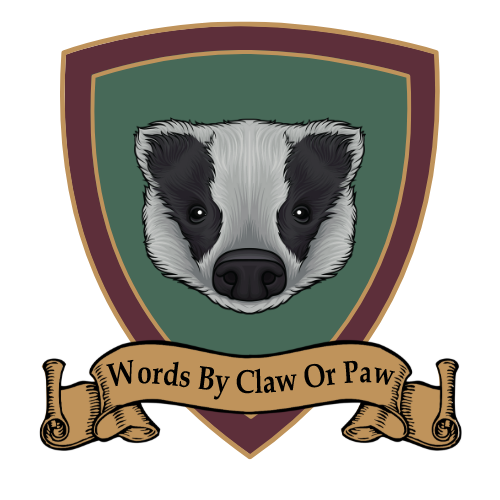Hare
I love lagomorphs, because on the one side you have sweet round bois, and on the other side you have feral wilderness prophets who have gone mad with the knowledge of the universe."Hare" is a name given to a variety of species of small mammals of the Lagomorpha genus, which also includes the Pikas and Rabbits. Hares are differentiated from rabbits in that they have longer and less rounded bodies, 48 chromosomes rather than the 44 of rabbits, and differences in reproduction and social behaviour. Unlike with rabbits, no hare has ever been successfully domesticated. Once classified as rodents, lagomorphs have been discovered to have diverged from their common ancestors earlier than their rodent cousins, and have many traits rodents lack, such as an extra pair of incisors. Hares, one of the primary symbols of House Lapin, like their cousins the rabbits, have been seen as trickster-spirits in myths and folktales from around the world. They are known for outsmarting (and often embarrassing) their enemies. Hares, however, often have an additional connotation of madness, magical power, or self-sacrifice.
Basic Information
Anatomy
Hares are furred creatures, best known for their elongated ears and powerful hind legs, as well as their fluffy, short tails. Hares are distinguished from rabbits by longer and less rounded bodies, longer legs, and longer ears. These longer legs and bodies lead to a faster overland running speed than rabbits.
Their cousins, the pikas, have a similar anatomy but lack an external tail and have shorter, more rodent-like ears. They also have rounded, shorter bodies, more similar to rabbits than to hares.
The hind legs of all lagomorphs are considerably larger and more powerful than the forelegs, creating their "hopping" form of locomotion. Since they rely primarily on speed and alertness to avoid predators, they also have well-developed musculature.
All three genii have elongated incisors, one pair behind the other, intended for chewing rough plant matter, and are classified as herbivores, although it has been proven that they will eat animal protein, usually scavenged, especially in harsh climates. They have large, widely spaced eyes.
Teeth and powerful hind legs can provide surprisingly formidable weapons, should a hare be attacked. They also have claws on all four limbs and can and will scratch. Since they tend to be larger than rabbits, hares also tend to be stronger and can be fierce when provoked.
Lagomorphs remain on their toes while in motion, and their toes are webbed to prevent spreading while doing this. Unlike most animals that move in this way, they do not have paw pads on their feet. Instead, they have compressed hair that provides their feet with protection.
Hares are speedy mammals and can run up to 80 km/h (50 mph) over short distances. Over longer distances, the European Hare can run up to 55 km/h (35 mph). The five species of jackrabbits found in central and western North America are able to run at 65 km/h (40 mph) over longer distances, and can leap up to 3 m (10 ft) at a time.
Genetics and Reproduction
Normally a shy creature, in its fertile season, which peaks in Europe in March, hares can be quite bold and unpredictable. They engage in "boxing," both in competitions for does and in does driving off would-be suitors. They behave a lot more boldy in general, and may even jump vertically in the air for seemingly no reason. This chaotic behaviour has led to the expression "mad as a March hare," which dates at least as far back as the 1500s.
Unlike rabbits, hares are usually born above ground in a shallow depression or nest in flattened grass called a form. Ovulation occurs after copulation; typically, a little under a half-dozen leverets, or baby hares, are born to a litter, but they can number up to a dozen. They are born with eyes open, and furred, unlike rabbits, which affords them greater protection in their above-ground environments. While they are usually considered to be sexually mature within a few months, they do not typically breed until they are a year old. There is significant variation among different species of hare, so this cannot be described in anything but the most general of terms.
Additional Information
Perception and Sensory Capabilities
Hares and other lagomorphs have widely-spaced eyes which allow for almost 360 degree vision, leaving only a small blind spot at the base of the skull. Their elongated ears, which are usually extremely mobile, allow them to detect enemies at significant distances, giving them increased time to react.
WIP
Streamer
Missing
Status: Location Unknown
Deceased
Status: Deceased Character
Retired
Status: Retired Character or Article
Scientific Name
Lagomorpha leporidae lepus
Geographic Distribution
Related Myths
There are several concerning facts regarding Queen Sable. We know she is Voidtouched, which should already make us concerned for her mental state. But did you know that not only is her birthday in March, but that she was born in the Year of the Rabbit? And that she is, in her shapeshifted lagomorph form, a white-tailed jackrabbit? That is a hare, not a rabbit. She is literally a "mad March hare!" And she's also a witch, which she freely admits! We call her "The Mother of Bunnies"... Is she a Mad Queen?


















Comments